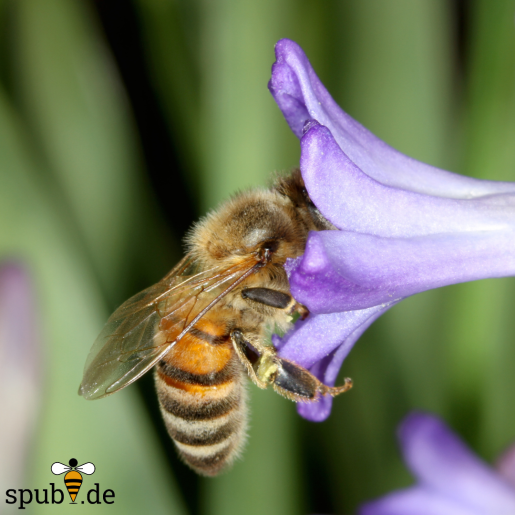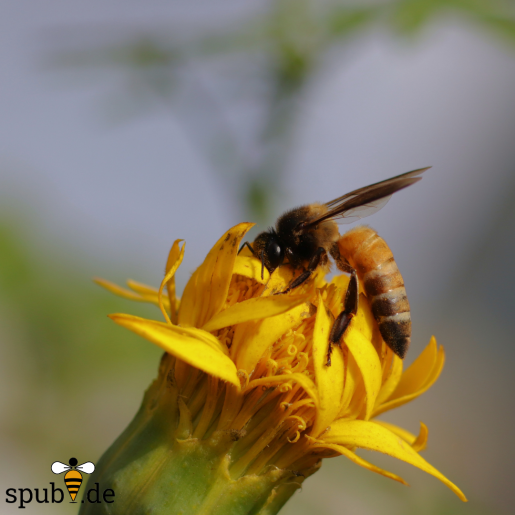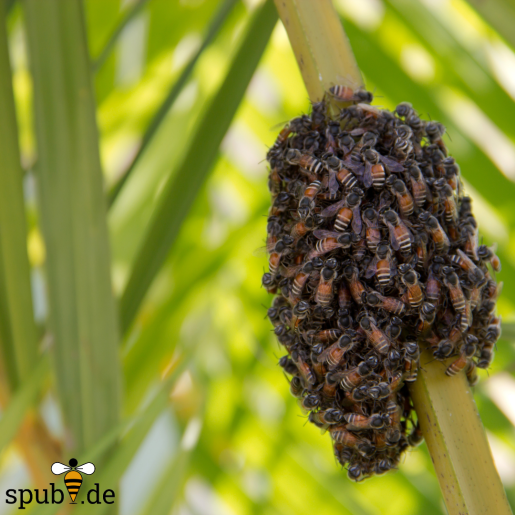Spubi's 5 - Honeybee species
Worldwide, there are only nine honey bee species, called Apis. These are kept by humans not only for honey production, but wax and propolis as well as the specific use for pollination also play a major role.
There are about 25 subspecies of the Western honey bee (Apis mellifera). In our cooler climate zones in Europe, the "dark European bee" is the most widespread.

The Eastern honey bee (Apis cerana) is sadly known to be the original host of the Varroa mite. Its ability to defend itself against hornets by means of a heat ball is unfortunately lost.

The giant honeybee (Apis dorsata) fascinates not only with its size similar to a hornet, but rather with the fact that it has a similar annual cycle to migratory birds and spends summer and rainy season in different places.

The cliff honeybee (Apis laboriosa) grows up to three centimetres in size and hangs its up to one metre long honeycombs on steep cliff faces. Find out how dangerous the harvest of this honey rarity is and what effects it has on the rock honey bee in this article by bee careful (german only).
The world's smallest species, the dwarf bush or bush honeybee (Apis andreniformis) hides its combs deep in the bushes and protects its brood with a kind of curtain of bees.

If you would like to know what is so special about the remaining four honey bee species, please have a look at this link.
Best wishes your Spubis




